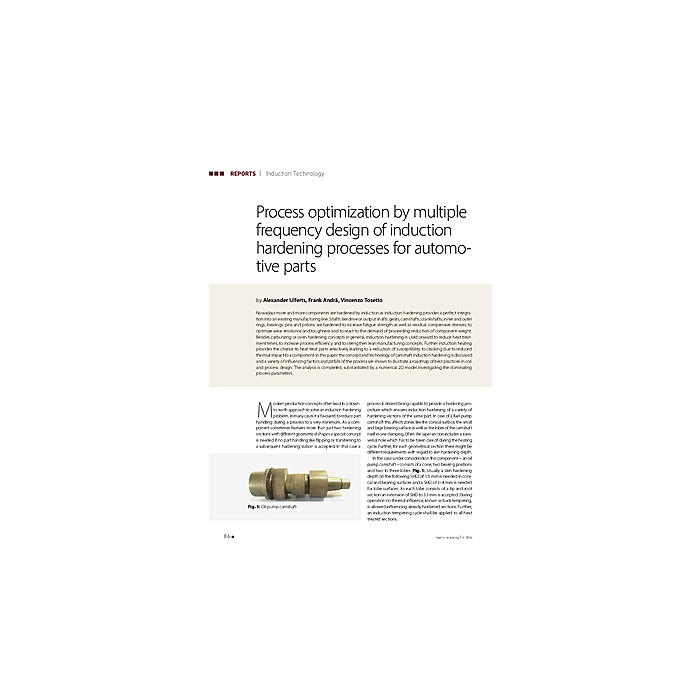Process optimization by multiple frequency design of induction hardening processes for automotive parts
4,90 €
Auf Lager
Artikelnummer
00541_2016_04_05
Nowadays more and more components are hardened by induction as induction hardening provides a perfect integration into an existing manufacturing line. Shafts like drive or output shafts, gears, camshafts, crankshafts, inner and outer rings, bearings, pins and pistons are hardened to increase fatigue strength as well as residual compressive stresses, to optimize wear resistance and toughness and to react to the demand of proceeding reduction of component weight. Besides carburizing or oven hardening concepts in general, induction hardening is used onward to reduce heat treatment times, to increase process efficiency and to strengthen lean manufacturing concepts. Further induction heating provides the chance to heat treat parts selectively leading to a reduction of susceptibility to cracking due to reduced thermal impact to a component. In this paper the concept and technology of camshaft induction hardening is discussed and a variety of influencing factors and pitfalls of the process are shown to illustrate a roadmap of best practices in coil and process design. The analysis is completed, substantiated by a numerical 2D model investigating the dominating process parameters.
| Autoren | Alexander Ulferts / Frank Andrä / Vincenzo Tosetto |
|---|---|
| Erscheinungsdatum | 01.04.2016 |
| Format | |
| Zeitschrift | heat processing - Ausgabe 04 2016 |
| Verlag | Vulkan-Verlag GmbH |
| Sprache | English |
| Titel | Process optimization by multiple frequency design of induction hardening processes for automotive parts |
| Beschreibung | Nowadays more and more components are hardened by induction as induction hardening provides a perfect integration into an existing manufacturing line. Shafts like drive or output shafts, gears, camshafts, crankshafts, inner and outer rings, bearings, pins and pistons are hardened to increase fatigue strength as well as residual compressive stresses, to optimize wear resistance and toughness and to react to the demand of proceeding reduction of component weight. Besides carburizing or oven hardening concepts in general, induction hardening is used onward to reduce heat treatment times, to increase process efficiency and to strengthen lean manufacturing concepts. Further induction heating provides the chance to heat treat parts selectively leading to a reduction of susceptibility to cracking due to reduced thermal impact to a component. In this paper the concept and technology of camshaft induction hardening is discussed and a variety of influencing factors and pitfalls of the process are shown to illustrate a roadmap of best practices in coil and process design. The analysis is completed, substantiated by a numerical 2D model investigating the dominating process parameters. |
Eigene Bewertung schreiben


